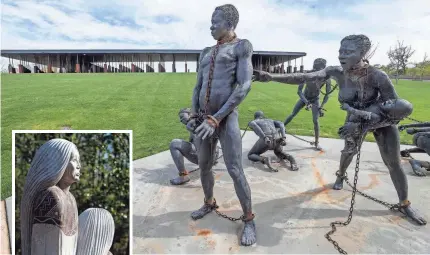In Montgomery, Alabama, a wooden bench overlooks the Alabama River, bearing witness to the harrowing journeys of enslaved Africans forced into a life of servitude. Meanwhile, in Charleston, South Carolina, the wide windows of the International African American Museum frame a view across the Cooper River, reminiscent of the distant shores from which countless individuals were violently uprooted.
As these sites come to fruition, they serve as poignant reminders of the enduring legacy of African American history in the United States. Tonya Matthews, President and CEO of the International African American Museum, emphasizes the importance of these spaces as repositories for narratives that have long been marginalized. “We have to build these places where we can tell the story, save the story, steward the story,” Matthews asserts.
Indeed, these museums and monuments represent a broader trend of cultural preservation and celebration unfolding across the nation. From Mississippi’s Civil Rights Museum to the National Memorial for Peace and Justice in Alabama, institutions large and small are emerging to honor the rich tapestry of Black history and the African American experience.
Lonnie Bunch, founding director of the National Museum of African American History and Culture, underscores the pivotal role of museums in shaping public understanding. “They’re all about storytelling, making you care about the people whose histories you explore,” Bunch explains.
Yet, the significance of these endeavors extends beyond mere storytelling. In the face of legislative efforts to suppress the teaching of Black history, museums stand as bastions of education and enlightenment. Vedet Coleman-Robinson, Executive Director of the Association of African American Museums, emphasizes the urgency of familiarizing oneself with these vital narratives. “Now is the time for people to really get familiar with our museums and our history,” Coleman-Robinson asserts. “We’re past due.”
However, the journey toward inclusivity and recognition is far from over. Despite the strides made, Brent Leggs, Executive Director of the African American Cultural Heritage Action Fund, highlights the persistent challenges facing African American historic sites. “African American historic sites have long been underfunded and undervalued,” Leggs observes.
Nonetheless, the investment in these cultural landmarks is deemed invaluable by those championing their cause. Bryan Stevenson, founder of the Equal Justice Initiative, reflects on the profound impact of these initiatives. “When I hear some of the things I hear, when the students come through and people come through, there’s no limit to what I would spend to try to create that kind of consciousness,” Stevenson declares.
As these museums continue to flourish, they serve as beacons of remembrance and resilience, ensuring that the stories of the past are not consigned to oblivion but instead serve as guiding beacons for future generations.

